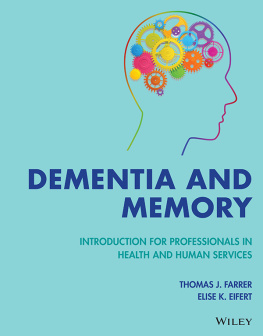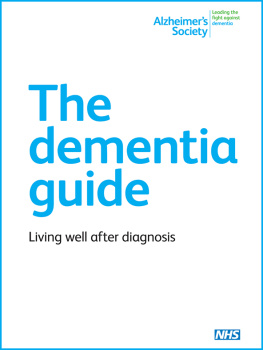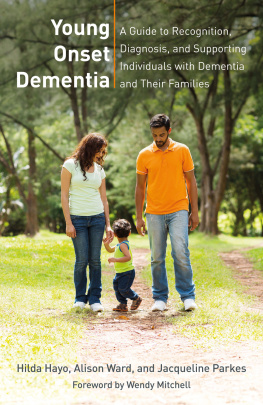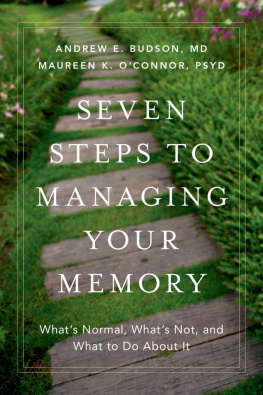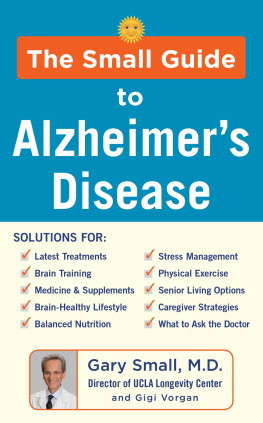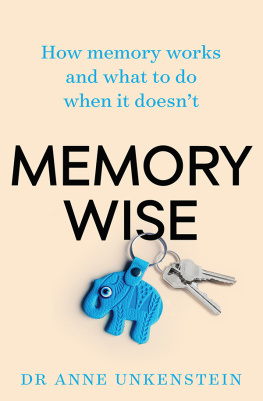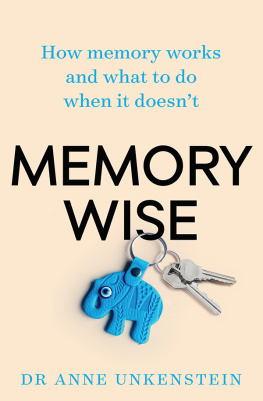Thomas J. Farrer - Dementia and Memory: Introduction for Professionals in Health and Human Services
Here you can read online Thomas J. Farrer - Dementia and Memory: Introduction for Professionals in Health and Human Services full text of the book (entire story) in english for free. Download pdf and epub, get meaning, cover and reviews about this ebook. City: Hoboken, year: 2022, publisher: Wiley, genre: Science. Description of the work, (preface) as well as reviews are available. Best literature library LitArk.com created for fans of good reading and offers a wide selection of genres:
Romance novel
Science fiction
Adventure
Detective
Science
History
Home and family
Prose
Art
Politics
Computer
Non-fiction
Religion
Business
Children
Humor
Choose a favorite category and find really read worthwhile books. Enjoy immersion in the world of imagination, feel the emotions of the characters or learn something new for yourself, make an fascinating discovery.
- Book:Dementia and Memory: Introduction for Professionals in Health and Human Services
- Author:
- Publisher:Wiley
- Genre:
- Year:2022
- City:Hoboken
- Rating:4 / 5
- Favourites:Add to favourites
- Your mark:
Dementia and Memory: Introduction for Professionals in Health and Human Services: summary, description and annotation
We offer to read an annotation, description, summary or preface (depends on what the author of the book "Dementia and Memory: Introduction for Professionals in Health and Human Services" wrote himself). If you haven't found the necessary information about the book — write in the comments, we will try to find it.
Addresses the psychology and treatment of diseases that affect the memory of an aging population
The aging population is growing, with a significant portion of the population over the age of 65. Epidemiological research suggests that rates of age-related conditions like Alzheimers disease will increase. Older individuals and their families face a host of problems related to the diagnosis, treatment, and psychological management of these conditions. There is a growing demand for healthcare personnel and professionals in the human and social services who have the knowledge and skills to meet the needs of this special population. Dementia and Memory: Introduction for Professionals in Health and Human Services aims to provide an introduction to dementia and memory disorders for professionals in public health, nursing, social work, gerontology, psychology, and beyond.
This book offers a scientifically rigorous approach with an approachable writing style, making it an ideal resource for all helping professions. All chapters take a multi-disciplinary approach to instruction, and all diseases are presented with applicable historical background. For each condition covered, from Alzheimers and Parkinsons to depression and frailty, youll find a description of the condition, epidemiological data, pathophysiology, diagnostic criteria, clinical presentation, treatment strategies, and a case vignette. Youll also learn about older adults daily needs, behavioral interventions, caregiver stress, and more.
- Gain background knowledge of age-related conditions including Alzheimers, Parkinsons, Lewy Body dementia, multiple sclerosis, and more
- Learn about the neuroanatomy of the aging brain and how its manifestations lead to unique caregiving issues and challenges
- Discover pharmacological, management, and intervention techniques that will help you better care for aging adults
- Combat caregiver stress and compassion fatigue when dealing with difficult memory disorders and dementia
Anyone who works with older adults in community, clinical, or research settings will benefit from this in-depth information on conditions of aging and dementia.
Thomas J. Farrer: author's other books
Who wrote Dementia and Memory: Introduction for Professionals in Health and Human Services? Find out the surname, the name of the author of the book and a list of all author's works by series.

